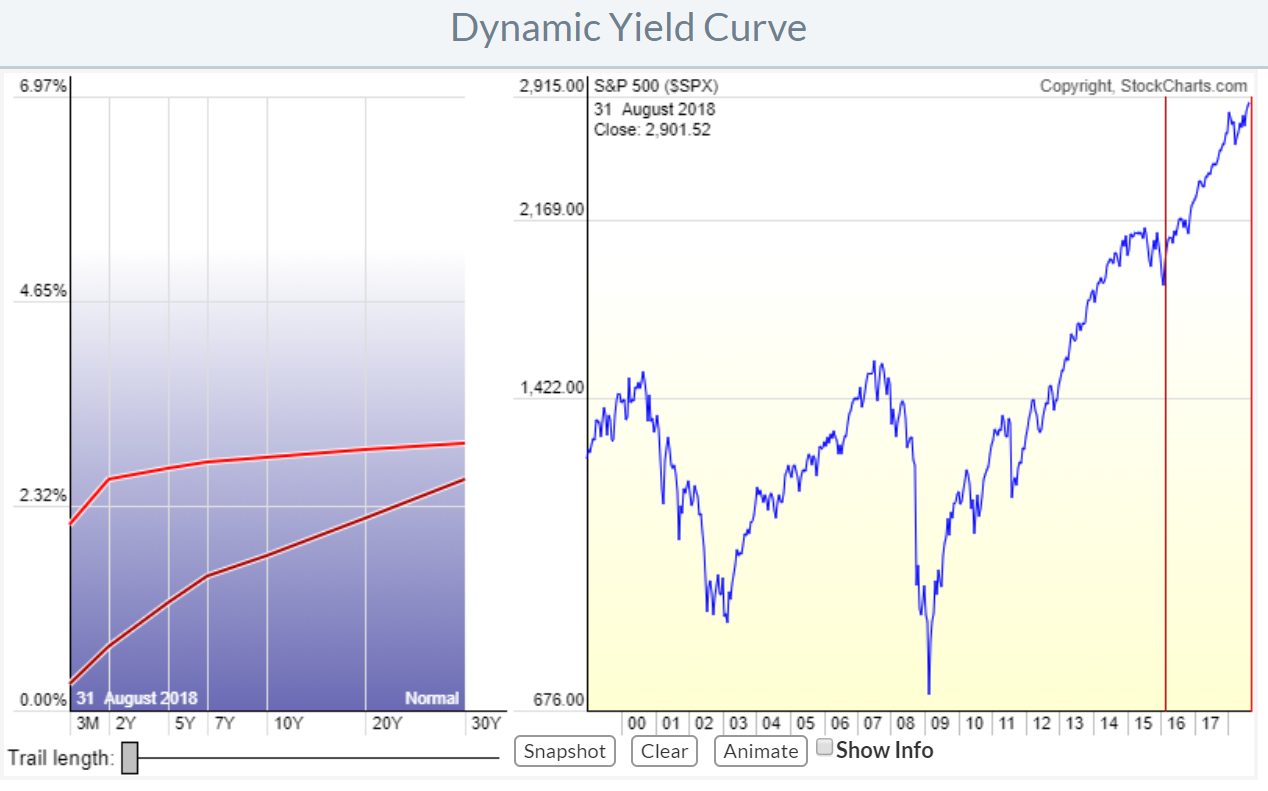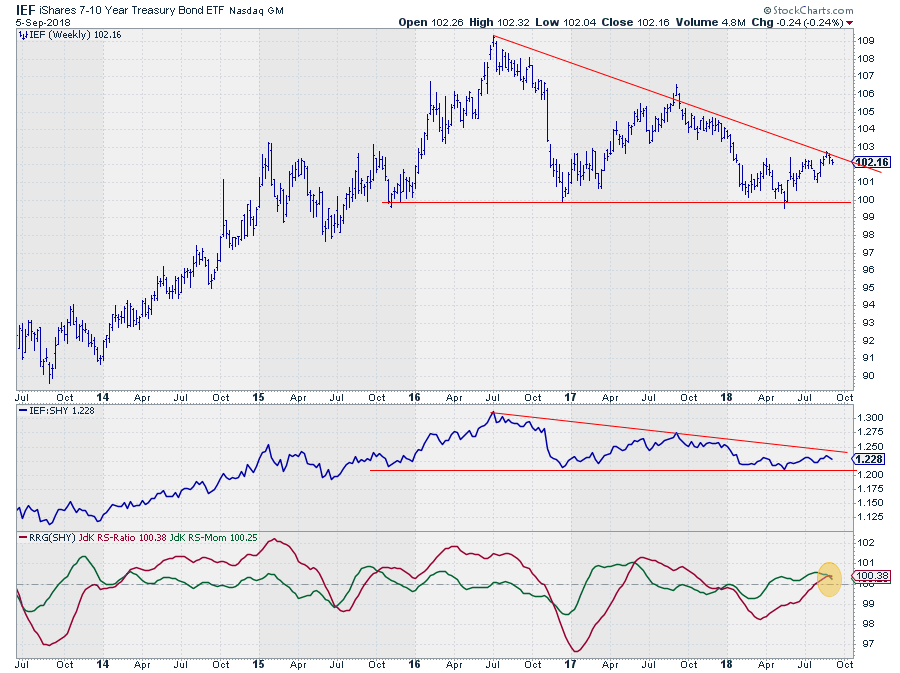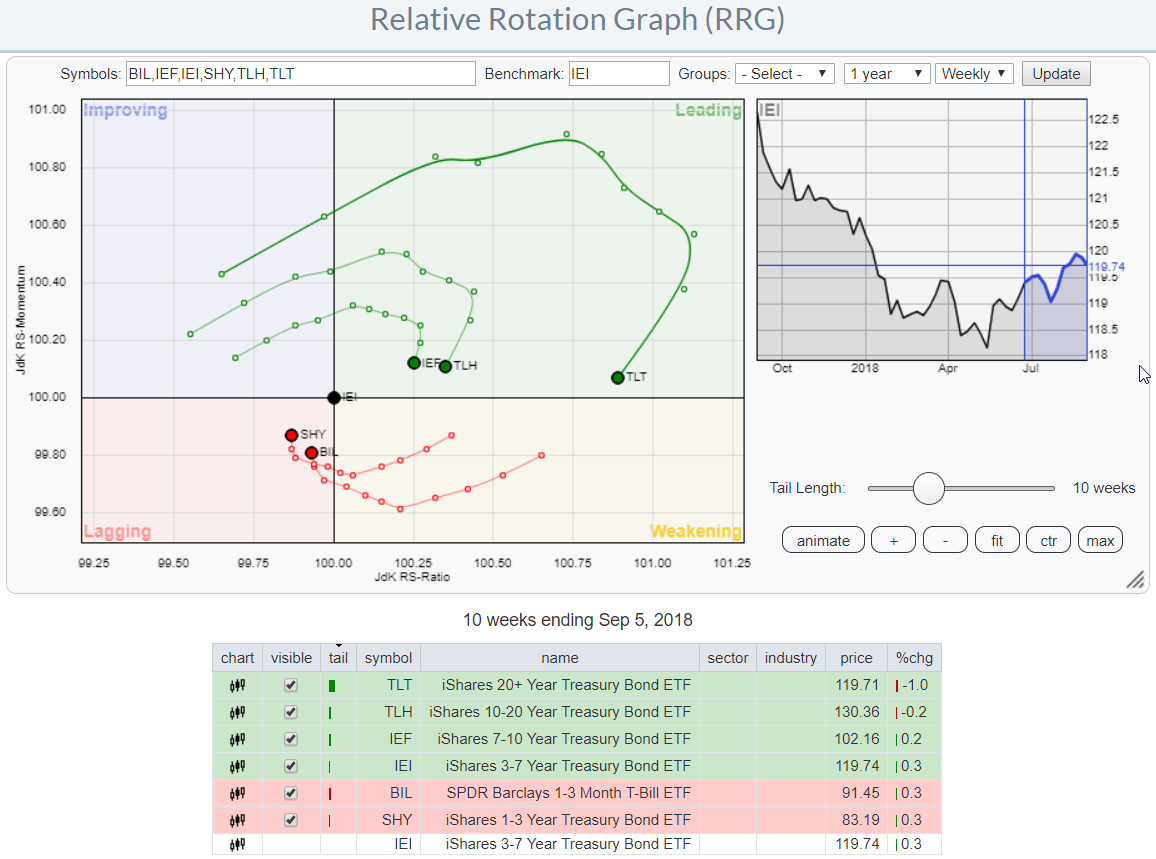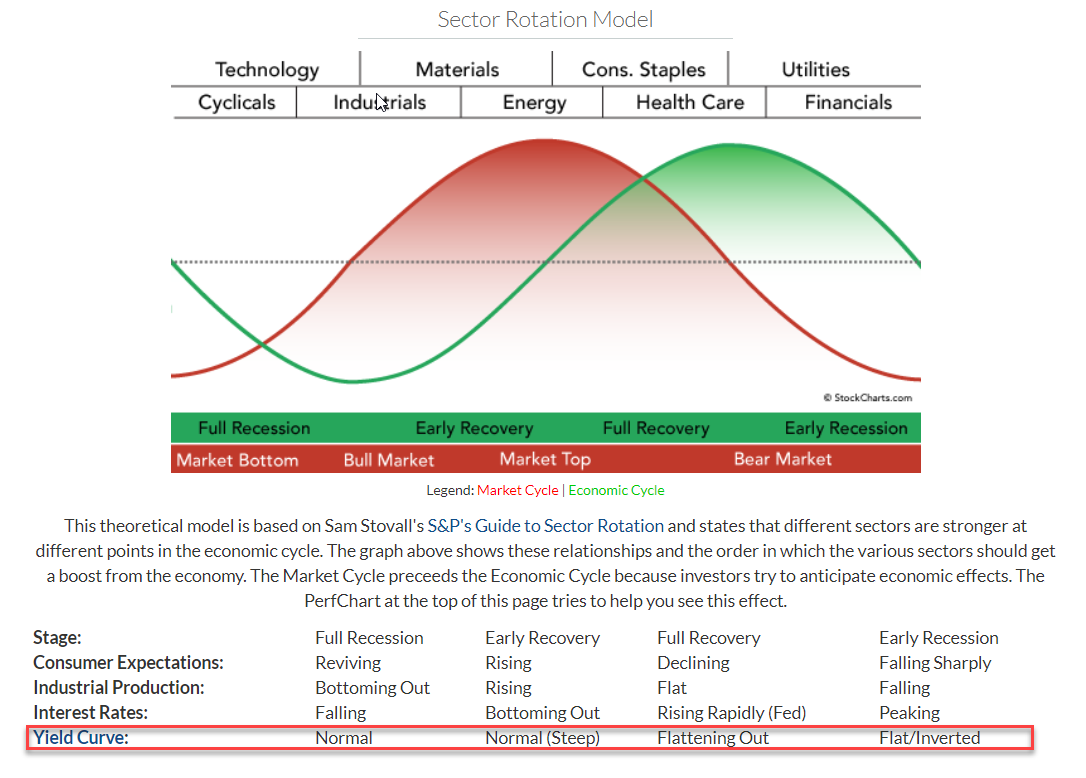 In one of my recent articles, I high lighted that Relative Rotation Graphs can do (much) more than just show equity sector rotation by showing how RRG can be used to analyze rotation among the different commodity groups against a broad commodity index.
In one of my recent articles, I high lighted that Relative Rotation Graphs can do (much) more than just show equity sector rotation by showing how RRG can be used to analyze rotation among the different commodity groups against a broad commodity index.
This post expands on a recent article in the Chartwatchers newsletter and points out the importance of asset allocation and shows how you can combine the relative rotation of the various segments of the (US) yield curve with the, relatively unknown, dynamic yield curve tool that we have available here on Stockcharts.com.
There is no holy grail
Those of you who read my RRG-blog on a regular basis or have seen my appearances in MWL will know that I do not believe in a one-size-fits-all technique, method, or indicator. Financial markets are simply too complex for that. And on top of that, the internal and inter-market relationships are constantly changing over time.
I became very aware of the interaction and relationships between the various asset classes while I worked on the trading floor of an investment bank.
The floor layout was organized by asset class. We had currency traders in one corner with short-term rates next to them. The bank was a major player in the bond market so the biggest section in the middle was occupied by all sorts of bond traders and salesmen (and -women) working the futures markets, cash bonds, derivatives, you name it. And at the opposite side of the room was the equity department.
Every time when a major news event hit the markets, the buzz would start in the currency corner. The phones would start ringing off the hook, salespeople who picked up the phones to take the client orders would start to speak up and soon shout to the traders who in their turn would turn up the volume of their squawk boxes to execute their trades with their counterparts at other banks or brokers.
Shortly thereafter the noise would spill over to the short-term rates section of the room, followed by bonds and eventually the equity traders and salespeople.
Events would almost always follow that same wave-like pattern. Almost like "the wave" in a sports stadium. What it taught me was that:
"When currency- and rates traders start to shout, the equity people should listen".
What it also made very clear is that major moves in the equity markets are NOT ignited by some company, not even FB, AMZN or GOOG, publishing good or not so good results.
These days are gone and trading floors nowadays are mostly silent with only cooling fans of computers to be heard but the lessons remain.
The clues to big market moves are coming from the Intermarket relations between currencies, bonds, and equities. Getting it right at the asset allocation level is crucial for the performance of your equity portfolio.
It's a puzzle
For this reason, I much rather see the financial eco-system as one big puzzle with many participants trying to solve that puzzle at the same time. And because of the fact that different types of participants have different characteristics, there are multiple ways to solve this puzzle.
It's intriguing and addictive, and when you (think you) have solved the puzzle someone bumps the table and all the pieces fall on the ground and you have to start all over again. It never stops!!
I do not see Relative Rotation Graphs as the sole solution or the holy grail. But I do see them as a great tool (yes, I am biased ;) to help you solve your particular puzzle and get a (completely) different angle of looking at things than you would get by using classical time-price based charting techniques.
Watching the yield curve
At the highest level, I use Relative Rotation Graphs to get a grip on Asset Allocation and to visualize asset rotation. Regular readers of this blog will know this and a sample article can be found here.
Once you are using RRGs for analyzing asset rotation you will soon find yourself looking at fixed income related instruments as well because, seriously, there are more investment opportunities than "just" the stock market. And from time to time we simply need an alternative for stocks.
To analyze fixed income markets analysts often look at the "Yield Curve" and especially the changing of the shape of the yield curve over time. It shows the relationship between, government, bonds that have different maturity dates.
The Dynamic Yield Curve tool that we have available here at Stockcharts.com helps to visualize that movement in a dynamic way.
In the TA world analyzing the yield curve is often done by comparing the spread or the ratio between 2-yr (SHY, 1-3 yr bonds) and 10-yr bonds (IEF, 7-10 yr bonds). The chart below shows this relationship in a regular chart form.
 My interpretation for this chart at the moment is that a large descending triangle seems to be in play with the falling resistance line connecting the last three major peaks and a horizontal support line that connects the last four major lows in IEF (2015, 2016, and twice in 2018 ).
My interpretation for this chart at the moment is that a large descending triangle seems to be in play with the falling resistance line connecting the last three major peaks and a horizontal support line that connects the last four major lows in IEF (2015, 2016, and twice in 2018 ).
This suggests that 7-10 year bonds should now be peaking against that falling resistance and embark on a new decline towards support near 100. By the way, as this is a chart of the bond prices, this means a RISE in yields!
Clearly, a break below that 100-level in IEF will be a sign of weakness and potentially trigger an acceleration of the decline (higher yields). A similar pattern is visible in the relative strength of IEF against SHY and this translates into RRG-Lines that are very close to the center (=benchmark) of the RRG.
Watch out! in the chart above the benchmark for the RRG-Lines is SHY so it will not match the position on the RRG shown below which uses IEI as the benchmark.
The declining relative strength causes the yield curve to "flatten" while the, generally, rising prices "lift" the complete curve to a higher level which is visualized on the yield curve chart at the top of this article.
Many more relationships that just 2-10yr
But! There are many more maturities between 3 months and 30 years which means that in order to get a handle on all those different relationships between the different maturities one would have to look at all the different spread charts. Just like you would need to look at all different relative strength charts between sectors for example to get a view on the complete sector universe in equity markets.
This is where Relative Rotation Graphs can help.
The RRG below shows a set of ETFs that represent various segments of the yield curve. By using the 3-7 year (average 5 years) as the benchmark this RRG shows the rotation of the various maturities around that 3-7 maturity.
 While reading this RRG you need to be aware of the fact that bonds and yield (on those bonds) move in opposite directions. The ETFs in this universe represents the underlying bonds. So when these ETFs move higher the yield for that segment drops and vice versa.
While reading this RRG you need to be aware of the fact that bonds and yield (on those bonds) move in opposite directions. The ETFs in this universe represents the underlying bonds. So when these ETFs move higher the yield for that segment drops and vice versa.
Therefore the interpretation of the RRG remains similar. The leading quadrant represents the segment(s) of the curve that outperforms or show a relative uptrend versus the benchmark. But rising prices means falling yields.
When the longer maturities move into the leading quadrant and the shorter maturities move into lagging that translates into a "flattening" yield curve. The opposite points to a "steepening" curve.
Integration with the sector rotation model
One of the ways this information can be used is to integrate it with the "sector rotation model" which looks at the business cycle in relation to the stock market and uses the movement of the yield curve as one of the items to help determine where we are in the business cycle.
 Click the image, then live version and scroll to the bottom of that page.
Click the image, then live version and scroll to the bottom of that page.
I hope this article helps you to give you some additional insight into the connections between the different parts of the financial markets from my own experience and how you can use the various tools that are available on the website to broaden your view and help you to save your personal puzzle for the financial markets.
Let me know what you think of this usage of RRG in the comments below. If you would like to receive a notification when a new RRG blog article is published, simply "Subscribe" with your email address.
Julius de Kempenaer | RRG Research
RRG, Relative Rotation Graphs, JdK RS-Ratio, and JdK RS-Momentum are registered TradeMarks ®; of RRG Research
Follow RRG Research on social media:
If you want to discuss RRG with me on SCAN, please use my handle Julius_RRG so that I will get a notification.






